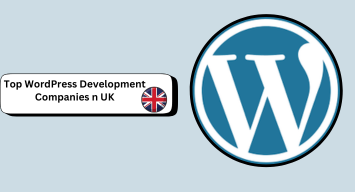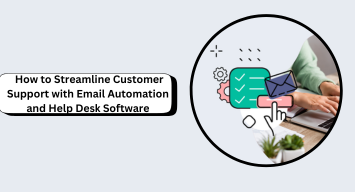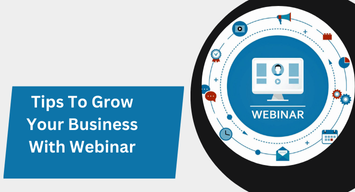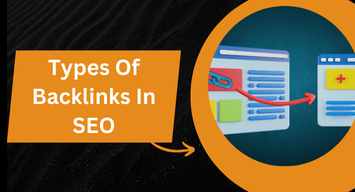How Marketing Teams Build Scalable Outreach Pipelines That Actually Perform
How Marketing Teams Build Scalable Outreach Pipelines That Actually Perform Reaching the right audience at the right time while keeping success and personalization is an ongoing task for modern marketing teams. Sending more emails is only one part of building an ongoing outreach pipeline; another is developing an ordered plan that produces ongoing results without taxing your staff or future clients. Understanding the Foundation of Scalable Outreach Clear goals and a complete understanding of your target market are the first steps in creating a scalable outreach pipeline. Marketing teams that succeed in this area don’t just issue messages to unknown contacts. They build organized networks that can grow without losing effectiveness. The key is creating processes that work efficiently, whether you’re reaching out to 100 people or 10,000. Creating a profile of your ideal client is the first step. Who are they? What problems do they face? What do they do with their time? These questions help you build a foundation for targeting the right people with the right messages. Without this clarity, even the most effective outreach system will fail to deliver meaningful results. Leveraging Quality Data for Better Targeting Working with low-quality data is one of the most common errors made by marketing teams. When you’re building outreach campaigns, having access to current contact information makes all the difference. Many successful teams invest in thorough databases that help them identify and reach decision-makers in their target market. For example, groups targeting specific software users can benefit from a CRM Users Email List that provides direct access to professionals who already understand the value of technology solutions. This targeted approach means your message reaches people who are more likely to take action because they’re investing in similar tools and platforms. Rather than setting a broad net and hoping for results, you’re connecting with qualified prospects who match your ideal customer profile. Your deliverability rates, response rates, and final ROI are all directly impacted by the quality of your contact data. For the duration of your outreach campaign, spending time creating or gaining the right lists pays off. Clean data means fewer bounced emails, better sender reputation, and more meaningful conversations with new clients. Creating Multi-Channel Outreach Strategies Relying on a single channel is an answer for limited results. The most effective outreach pipelines incorporate multiple touchpoints across different platforms. Email, LinkedIn, phone calls, direct mail, and even targeted marketing can fall under this category. Each channel has a specific purpose and reaches prospects in different contexts. Email remains the basis of most outreach strategies because it’s practical, measurable, and cost-effective. However, integrating email with other channels increases your chances of getting through the noise. Response rates can be greatly increased, for example, by following up an email with a phone call or a LinkedIn connection request. The key is maintaining unity across all channels while changing your message to fit each platform’s particular features. Your LinkedIn message should feel natural for that platform, while your email can be more detailed and formal. By using multiple channels, you can make sure that you are interacting with prospects where they feel most at ease. Building Effective Email Sequences At the heart of most outreach pipelines is a powerful email order. These aren’t random messages sent whenever someone remembers; they’re carefully planned touchpoints designed to guide prospects through a journey. A typical plan might include an introduction email, a value-add follow-up, a case study or social proof message, and a final call-to-action. Each email in your set must have a specific purpose and provide genuine value. Avoid falling into making every message a sales pitch. choose to focus on teaching, helping, and building trust. Share ideas, offer useful resources, or highlight how you’ve helped similar companies solve problems they’re facing. Personalization at Scale The word “scalable” often makes people think of general, direct contact, but the best outreach pipelines achieve the opposite. With the use of changing areas, based content, and behavioral triggers, modern technology lets you customize messages at a level. This means each user feels like you’re speaking directly to them, even though you’re sending messages to thousands of people. Adding a first name is only one part of personalization. It includes information about their company, industry-specific challenges, recent news about their organization, or content they’ve engaged with at one time. When working with a professional email List, division becomes essential. Sort contacts into groups based on their industry, job title, size of business, or behavioral patterns, then adjust your messaging properly. Engagement rates have greatly increased with this focused strategy. A marketing director at a tech startup has different goals than a CFO at a factory. Your outreach must incorporate these differences. The more important your message, the higher your chances of getting a response and starting a meaningful conversation. Measuring and Optimizing Performance Building an effective pipeline isn’t a singular process. Long-term success requires regular measurement and optimization. Determine important data like open rates, click-through rates, response rates, and conversion rates. These numbers tell you what’s working and what needs adjustment. Conclusion Building able outreach pipelines requires strategic thinking, quality data, multi-channel delivery, personalization, and continuous optimization. Marketing teams that master these elements create systems that generate regular outcomes without regular manual effort. The key is balancing automation with natural human connection, ensuring that as you scale, you never lose sight of the real people on the receiving end of your messages. With the right approach, your outreach pipeline becomes an effective engine for business growth.









